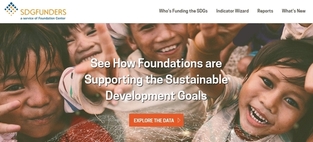Building the Case for Collaboration in Your Organization: For a Partnership With Philanthropy
Grantmakers working in corporations sometimes find it hard to get attention and cooperation from their business colleagues or senior management — not because their civic activities aren’t valued but because they aren’t valued enough. Colleagues may need persuading that the company’s philanthropic work is worthwhile, not just for its moral goodness or as a way of placating critics but because it benefits the company.
“To really have their attention,” says one corporate grantmaker, referring to corporate managers and executives, “it’s got to be more than ‘We want good P.R.’ A project needs to be related to a business need or a business priority for the company.” Examples that some grantmakers cited are activities through which the company’s brand name comes to be associated with values that it considers important, such as literacy, science, creativity, or healthy competition. Other examples include efforts to improve the physical or economic condition of communities where the company has facilities, or programs for families and children that benefit employees and their families.
Conversely, some business colleagues may be uneasy with the idea that philanthropy and business interests should intersect at all. Isn’t philanthropy supposed to be pure and un-self-interested? Tax-exempt charitable activities do have limits, and by law they must not directly serve a profit-making purpose. Still, many legitimate charitable activities also create a better environment for the company and its employees and show commitment to good corporate citizenship.
Experienced corporate grantmakers offer a few pieces of advice:
- Don’t be shy about aligning your grantmaking with corporate interests. “One of the observations that I had early on,” recalls one grantmaker about starting work at a corporate foundation, “was that the company had so exaggerated its desire to keep its philanthropy separate from its core business that the philanthropy provided no lift for the company itself. That seems counterproductive.” This grantmaker pointed out to colleagues that even the purest individual charity normally springs from people’s particular values, talents, and community relationships. A corporation need not be embarrassed about citing those same motivators for charitable activity. “Otherwise,” said another grantmaker, “people start to think up their own explanations for why you’re active in philanthropy. The things they imagine can turn out to be wrong and unflattering.”
- Involve colleagues from within your company. A grantmaker in the corporate foundation of a pharmaceutical company was planning a program of grants to regional community health organizations to combat HIV and AIDS. As the grantmaker described her approach, “I pulled a working group together and basically put these ideas out there to see if there was some resonance.” She then called on various colleagues within the company to tap their knowledge and serve as technical resources. A colleague in the company described the process this way: “From the start, she was looking toward building an interest base across multiple areas within the company. By the time she presented it to our foundation board, she was able to say, ‘Here’s the team of people who’ve been involved, and here’s what they see coming out of it.’”
- Learn about measurement techniques and their limits. Corporate grantmakers are often asked to demonstrate the business value of their proposals. One attendee at a grantmakers’ conference offered this reflection: “We had two days of looking at different measurement methods, but there is nothing clear cut. There is frustration that there’s not something quick and dirty with which to demonstrate business value.” It pays to know what techniques are out there, and their strengths and weaknesses, when making a case for a philanthropic partnership.
Takeaways are critical, bite-sized resources either excerpted from our guides or written by Candid Learning for Funders using the guide's research data or themes post-publication. Attribution is given if the takeaway is a quotation.
This takeaway was derived from Working with the Business Sector.


